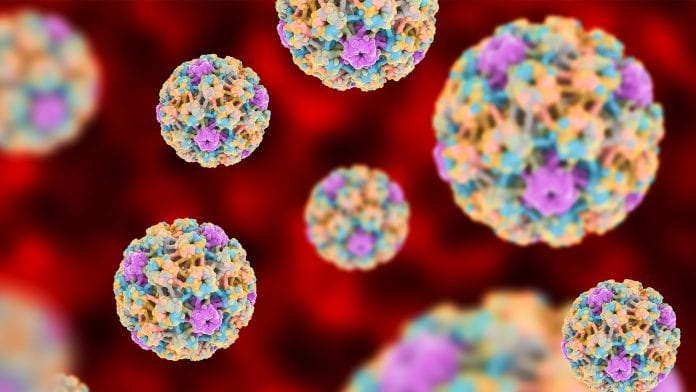
According to Karolinska Institutet, Sweden, human papilloma virus can cause cervical cancer & women have higher risk of pre-cancerous lesions if they carry HPV 16 or 18.
Four out of five women of fertile age are infected with HPV at some point in their lives. Although most of these infections clear on their own, for 5% of women, the infection turns chronic. Chronic human papilloma virus infection can cause pre-cancerous lesions and cancer of the cervix. HPV types 16 and 18 cause some 70% of all cases of cervical cancer and the majority of high-grade pre-cancerous lesions.
Human papilloma virus (HPV)
“This is odd when we know that HPV is associated with cervical cancer,” says Sonia Andersson, professor of gynaecology at the Department of Women’s and Children’s Health, Karolinska Institutet.
“So we wanted to examine the cervical cancer risk for patients with normal smear results.”
The study included over 9,000 normal smear tests from women between the ages of 20 and 60 who took their tests under the Swedish screening programme from the years 2005 to 2007. During the follow-up period ending 2014, almost 100 of these women developed high-grade pre-cancerous lesions or in a few cases actual cervical cancer. These patients’ cell samples were then tested for HPV and compared individually with samples from healthy women. The researchers found that women over the age of 30 who were carriers of high-risk HPV had, regardless of human papilloma virus type, an eight times higher risk of developing high-grade pre-cancerous lesions or cancer than women with negative HPV findings.
Women below the age of 30 who tested positive for HPV types 16 and 18 had a much higher risk of developing high-grade pre-cancerous lesions or cervical cancer compared to women with negative HPV findings. The HPV tests used in screening programmes today do not show which type of HPV a woman is carrying, only that she has a high-risk type of the virus.
“It should be remembered that most HPV infections clear on their own, including HPV 16/18.” Adds Andersson.
“But HPV is the most common risk factor for developing cervical cancer and should be followed up methodically. In this way, more pre-cancerous lesions can be treated on time and more cases of cancer prevented.”






















